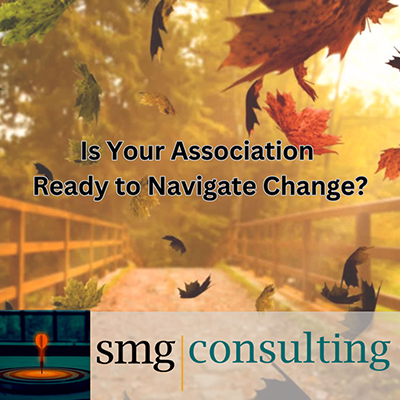Why Conducting an Organizational Assessment is Essential for Association Leadership

In today’s dynamic landscape, associations need to stay relevant and agile, adapting swiftly to evolving member expectations and industry changes. It’s essential for association leaders to periodically pause, reflect, and evaluate how well their organization aligns with its mission and serves its members. This is where an Organizational 360 Assessment becomes invaluable, as it provides a clear picture of the association’s current performance and alignment with its goals. At SMG Consulting, we emphasize the importance of this evaluative step as a foundation for strategic clarity and impactful decision-making.
Mary Connor, President of SMG Consulting, explains, “An Organizational 360 Assessment enables association leadership to step back and examine all aspects of their organization. It uncovers strengths, areas for improvement, and alignment with member needs, ensuring resources are directed where they matter most.”
What is an Organizational 360 Assessment?
An Organizational 360 Assessment is a comprehensive, structured evaluation designed to provide an objective overview of an association’s current performance. At SMG Consulting, we go beyond standard operational reviews, taking a deep dive into how well the association’s activities, goals, and structures align with its mission and its members’ needs. This assessment can range from specific program evaluations to a full-scale review of the organization, including governance, financial health, member engagement, programs, and external positioning.
Organizational 360 Appraisal: Taking the Next Step
While an Organizational 360 Assessment gives a thorough view of the association’s current state, SMG Consulting’s Organizational 360 Appraisal goes a step further. Following the assessment, the appraisal phase provides strategic recommendations based on the findings. Our Organizational 360 Appraisal offers associations actionable insights and suggests targeted changes that can propel the organization forward.
Connor elaborates, “With our Organizational 360 Appraisal, we don’t just assess; we advise. We work collaboratively with association leaders to prioritize changes that align with their unique culture and goals, ensuring sustainable growth and meaningful member engagement.”
Key Areas Examined in an Organizational 360 Assessment
SMG Consulting’s framework for the Organizational 360 Assessment focuses on:
- Governance: Evaluates board roles, policies, and effectiveness in guiding the association’s strategic direction.
- Financial Health: Assesses revenue streams, expenses, and reserves to determine long-term sustainability.
- Membership and Stakeholder Engagement: Analyzes value delivered to members, identifying opportunities for enhanced engagement and growth.
- Programs and Services: Reviews the relevance and performance of programs, identifying any that should be revamped, expanded, or sunsetted.
- Human Resources and Operations: Examines staff capacity, skills, and resource allocation to optimize efficiency.
- Technology and Infrastructure: Ensures that technology supports both member engagement and operational efficiency.
- External Environment: Analyzes industry trends, threats, and opportunities that may impact the association.
Steps in the Organizational 360 Assessment Process
A successful assessment at SMG Consulting follows these steps:
- Define Objectives: Set clear goals for the assessment, such as exploring member engagement, refining the value proposition, or addressing financial sustainability.
- Engage Stakeholders: Gather input from board members, staff, and members to understand the organization’s performance from all angles.
- Gather Data: Use surveys, interviews, and focus groups to collect comprehensive data on finances, member satisfaction, and program effectiveness.
- Analyze Findings: Identify patterns and benchmarks, comparing data against industry standards.
- Identify Gaps and Opportunities: Pinpoint strengths and areas for improvement, ensuring current programs and member engagement efforts meet industry needs.
- Develop Recommendations (Appraisal Phase): For those opting for an Organizational 360 Appraisal, SMG provides strategic recommendations based on assessment findings. These may include changes to program offerings, governance adjustments, or new initiatives for member engagement.
Mary Connor adds, “At SMG, we don’t stop at identifying gaps. Through our appraisal phase, we help associations map out actionable steps to address their unique needs and prepare for the future.”
Why Now?
Associations are navigating rapid changes—technological advances, shifting member expectations, and external pressures. Conducting an Organizational 360 Assessment now equips association leaders to respond effectively, positioning their organizations as responsive, impactful entities in their fields. Unlike traditional strategic planning retreats that require the board and staff to meet in person for several days—often only every three to four years—the 360 Appraisal allows for more nimble, introspective check-ins at regular intervals. This enables associations to review critical areas between those in-person retreats, fostering adaptability and ongoing alignment with the organization’s mission.
Mary Connor sums it up: “A well-conducted assessment or appraisal isn’t just about identifying current challenges; it’s about laying the foundation for growth that aligns with the association’s mission. Leaders who embrace this process position their organizations to thrive and deliver lasting value to their members.”